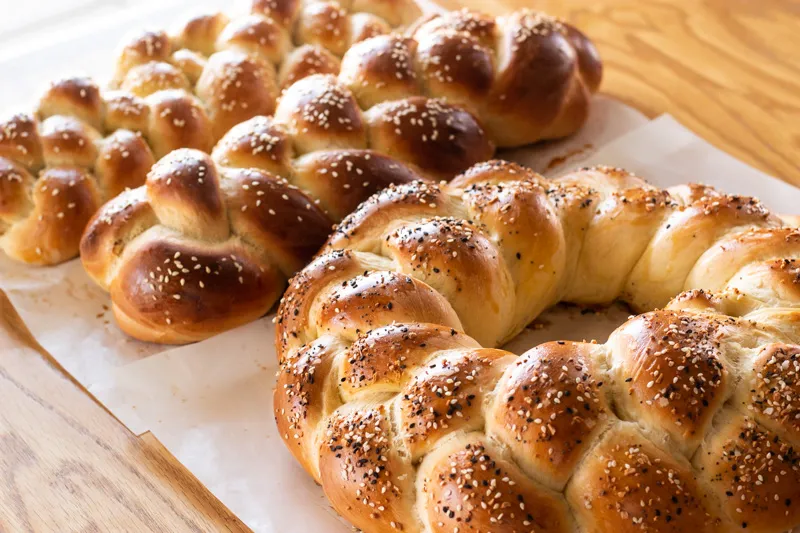Challah is a rich braided bread that adorns Shabbat tables in Jewish homes the world over. This essential, delicious traditional bread with the biblical origin is the perfect package for anyone looking to amp up their holiday baking or to simply experiment with flavor extracts in holiday meals.
Growing up in a traditional observing family, challah was something that we seemed to have around a lot. Its light and buttery flavor are something I remember when thinking of my childhood. Even though my family was pretty religious, my mother didn’t always make the bread herself, and we often got it from our local kosher bakery, Zomick’s. The bakery is still located at the corner of Inip Drive in Inwood, where they make probably the best challah bread in the city.
For those of you who don’t know much about Jewish tradition, Challah is a special bread in Jewish cuisine. Customarily, challah is eaten weekly on Shabbat, the Jewish Sabbath. A traditional Jewish household has two braided loaves on the table. They are, symbolic of memory, history, and grace, with the richer bread representing the sweetness of God’s gift of manna, as well as Shabbat itself.
Challah is made in various sizes and shapes, all of which have a meaning. Braided ones, which may have three, four, or six strands, are the most common, and because they look like arms intertwined, symbolize love. Three braids symbolize truth, peace, and justice. Twelve humps from two small or one large braided bread recall the miracle of the 12 loaves for the 12 tribes of Israel. Round loaves, where there is no beginning and no end, are baked for Rosh Hashanah to symbolize continuity.
The word challah in the Torah is first used when God describes to the Jewish people what life will be like for them in the Land of Israel. Namely, Challah was used to describe the portion that is set aside. Doughs made of any of the five grains (wheat, barley, rye, or oats) should have a portion separated out, which was later given to the priests who worked in the Temple and their families to eat. Until this day, Jewish bakers, home cooks, and commercial bakeries separate a portion of dough from each batch of bread they bake. After kneading the dough, the cooks say a special blessing.
Challah, soft and rich, brushed with egg wash, and woven into complex shapes or beautiful braids, is served in households around the world with Shabbat dinner. However you bake it, continues to play a central, delicious role in the rhythm of Jewish life. Looking for a delicious challah recipe? Try one of Zomick’s challah favorites.
